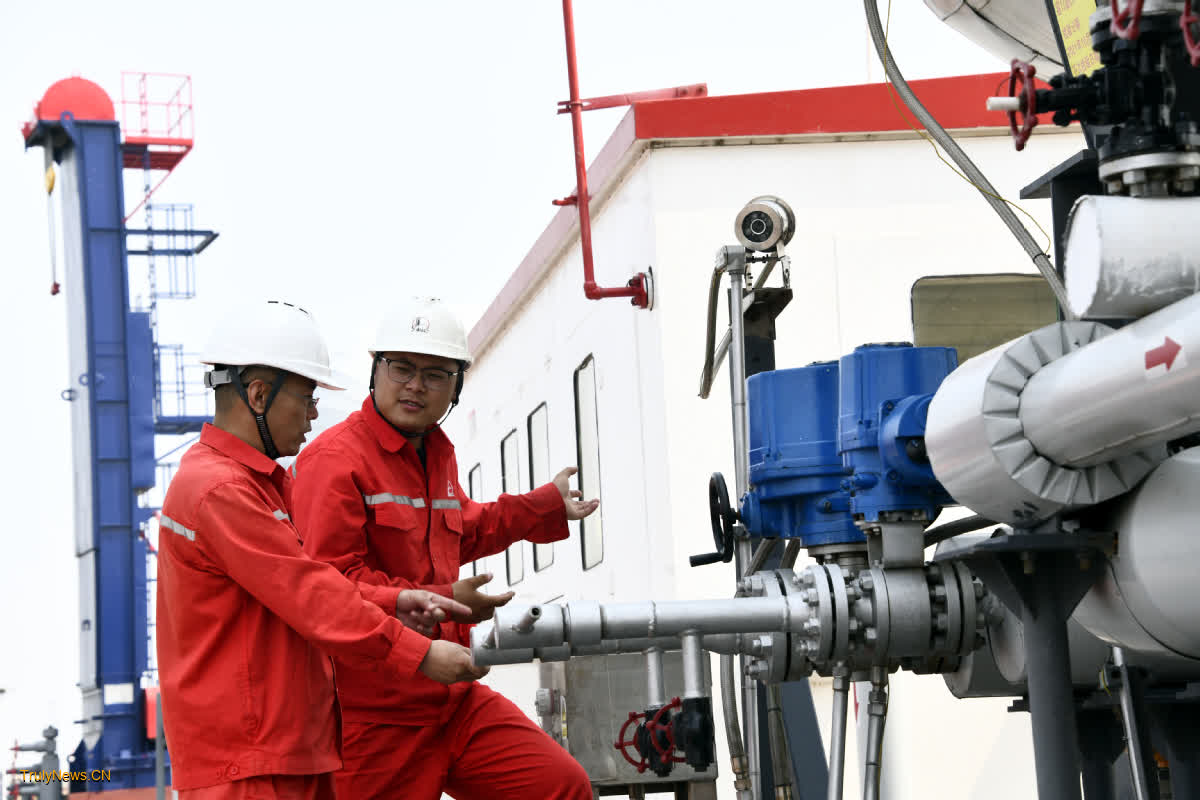
China’s three State-owned oil giants have been accelerating efforts in new energy sectors, including solar, hydrogen and wind power, to diversify revenue sources and adapt to a fast-changing global energy landscape.
This is part of the oil giants’ efforts to expand their renewable portfolios to hedge against oil price volatility and support China’s ambitious energy transition goals, they say.
The companies, collectively known as the “big three”, reported stable profits for the first three quarters of 2024 and unveiled significant expansion into renewables like wind, solar, hydrogen and carbon capture, as they navigate an evolving energy landscape.
China National Petroleum Corp, or PetroChina, has been accelerating the integration of oil and gas exploration with new energy development during the first three quarters of this year, advancing large-scale renewable energy projects.
It maintained rapid growth in wind and solar power generation, geothermal energy, hydrogen, and carbon capture, utilization and storage (CCUS) operations, with its renewable energy and oil-gas hybrid operations posting an 8.7 percent profit growth to 144.26 billion yuan ($20.26 billion) during the first three quarters of this year, underscoring a promising start for its clean energy endeavors.
While China Petroleum and Chemical Corp (Sinopec) has been focusing its efforts on the hydrogen transportation sector, vigorously promoting the development of its charging and fueling network to support steady growth in hydrogen-powered transportation, China National Offshore Oil Corp has been striving to lead in deep-sea wind power, actively promoting the integration of offshore wind power with oil and gas production and increasing the level of green power substitution and advancing the industrialization of CCUS technologies.
According to the companies’ third-quarter reports, the “big three” oil companies collectively achieved a net profit of approximately 293.43 billion yuan. Of this, PetroChina reported a net profit attributable to parent company shareholders of 132.52 billion yuan, Sinopec reported 44.25 billion yuan, and CNOOC reported 116.66 billion yuan.
Analysts believe that through the development of new energy businesses, the “big three” oil companies are advancing efforts to diversify their revenue sources.
While traditional energy remains central to their operations, the trio’s pivot to renewables is crucial for future-proofing against fluctuating oil prices and meeting China’s renewable energy targets, said Wang Lining, director of the oil market department under the economics and technology research institute of China National Petroleum Corp.
Traditionally focusing on oil and gas, Sinopec’s recent entry into geothermal power for example, reflects a strategic move toward diversifying the energy portfolio of the company, which has been the world’s largest refiner, he said.
Their focus on traditional and new energy sources reflects their calculated approach to energy transition — building on their core competencies while strategically positioning in renewables, he added.
According to the institute, new energy is set to advance rapidly over the next decade, enhancing the country’s technological and manufacturing capabilities to accelerate the global energy transition.
Despite an ambitious renewable push, the oil majors also continue to increase upstream spending while stepping up oil and gas exploration to ensure domestic energy security, said the companies.
PetroChina reported a modest 2 percent year-on-year growth in oil and gas output to more than 1.34 billion barrels of oil equivalent during the first nine months of this year, while CNOOC’s net production rose 8.5 percent year-on-year, setting a historical high, it said.
Sinopec, though impacted by lower international crude prices, posted progress in its domestic shale oil and gas exploration efforts during the first three quarters, notably in Sichuan Basin shale gas and Beibu Gulf Basin projects.
Li Ziyue, an analyst at BloombergNEF, noted that national oil companies have focused on securing supply, a strategy likely to bolster strong growth in gas production going forward.
China’s three State-owned oil giants managed to set new production records in 2023, despite a slowdown in global economic growth and lower international crude oil prices.